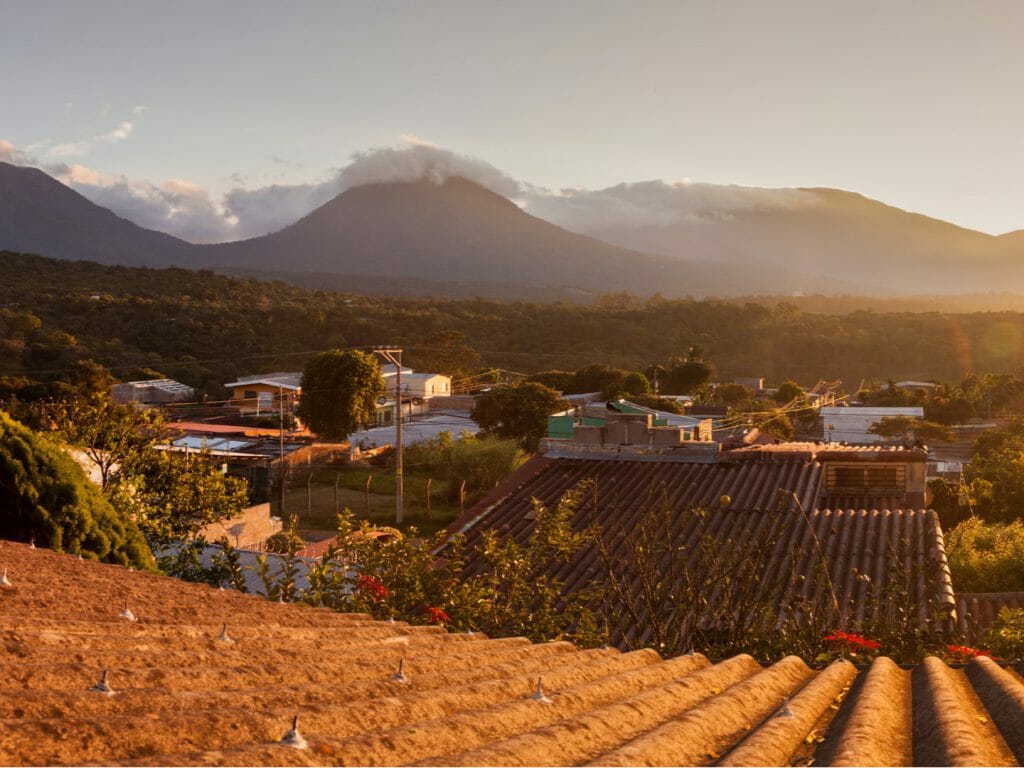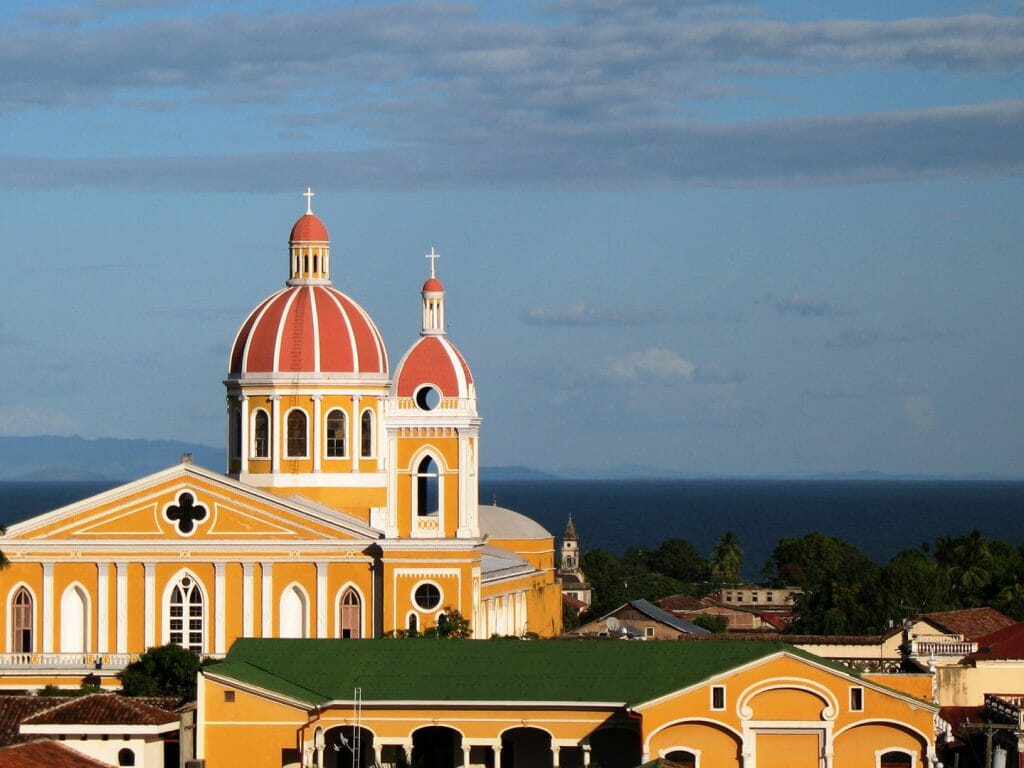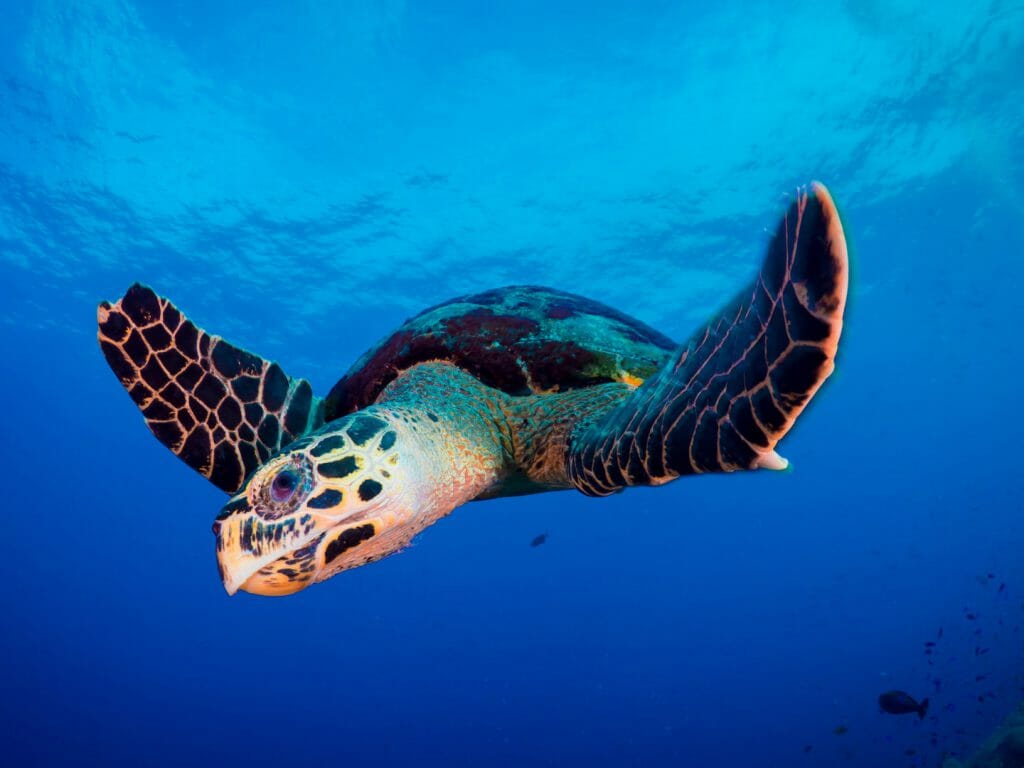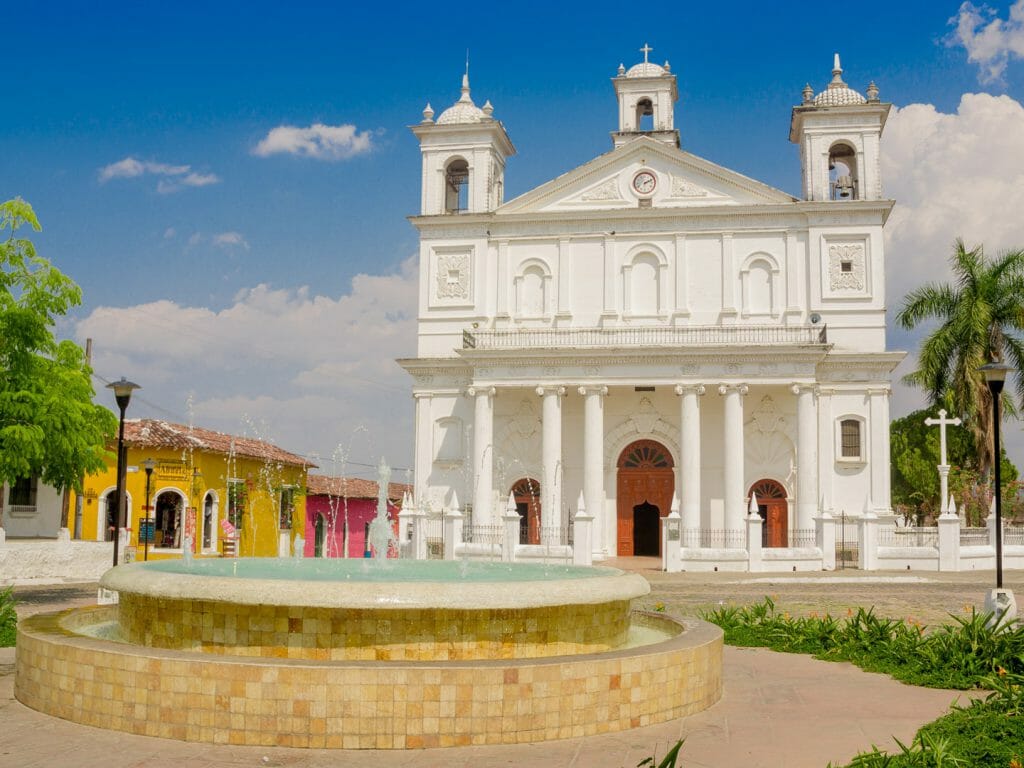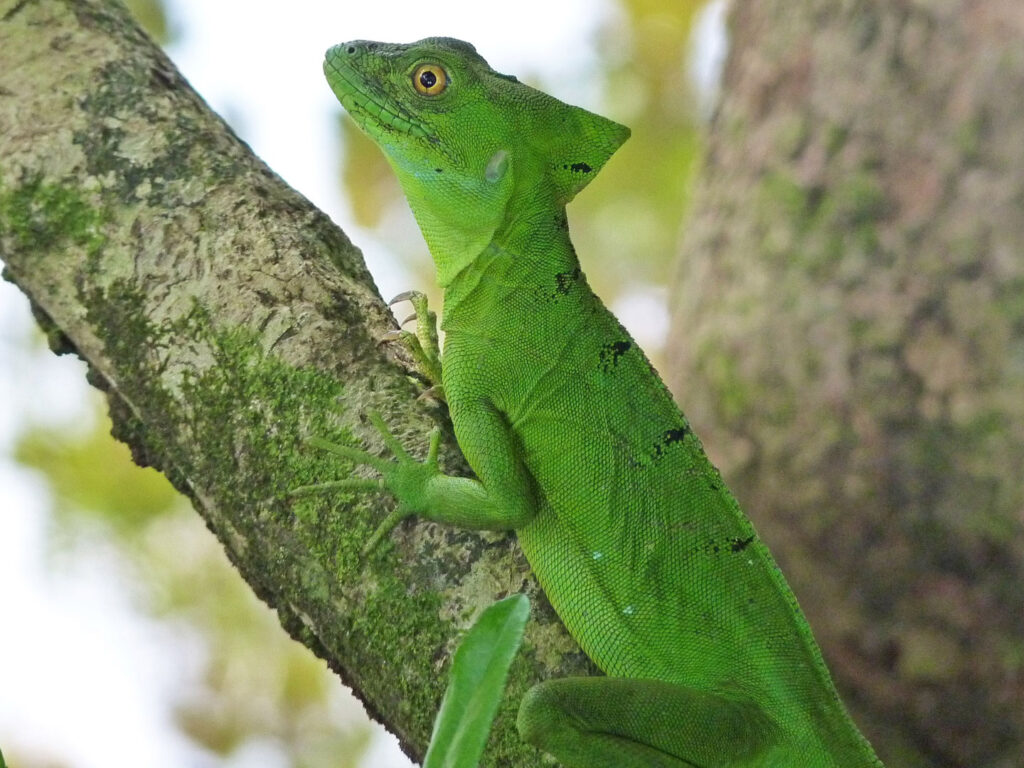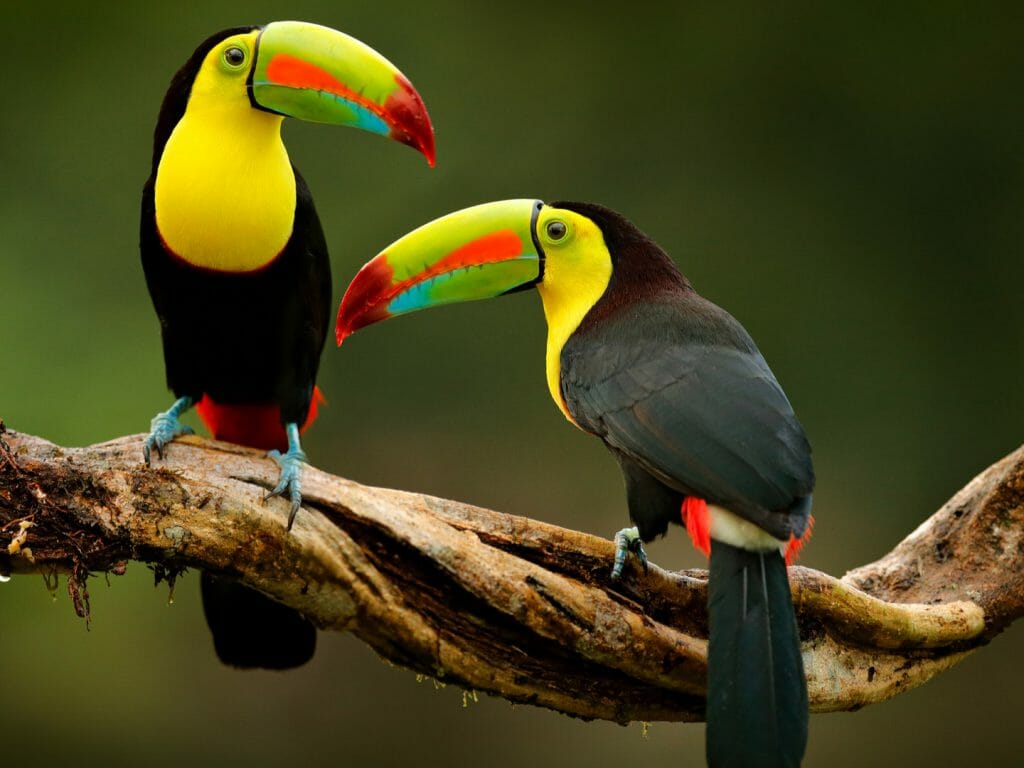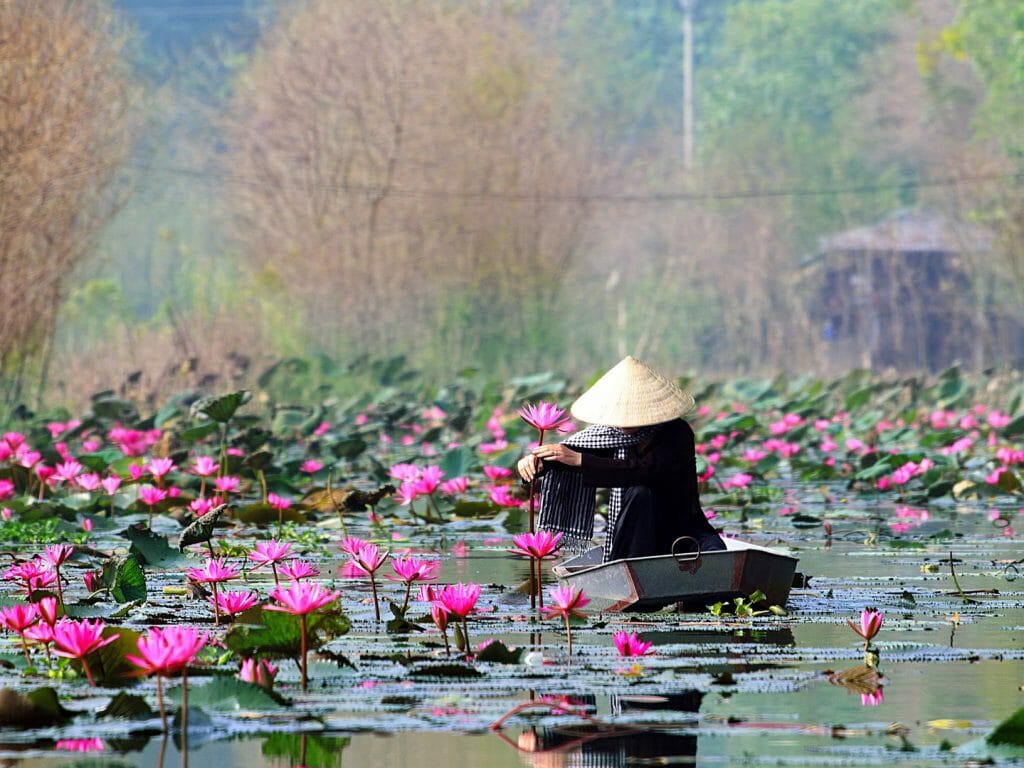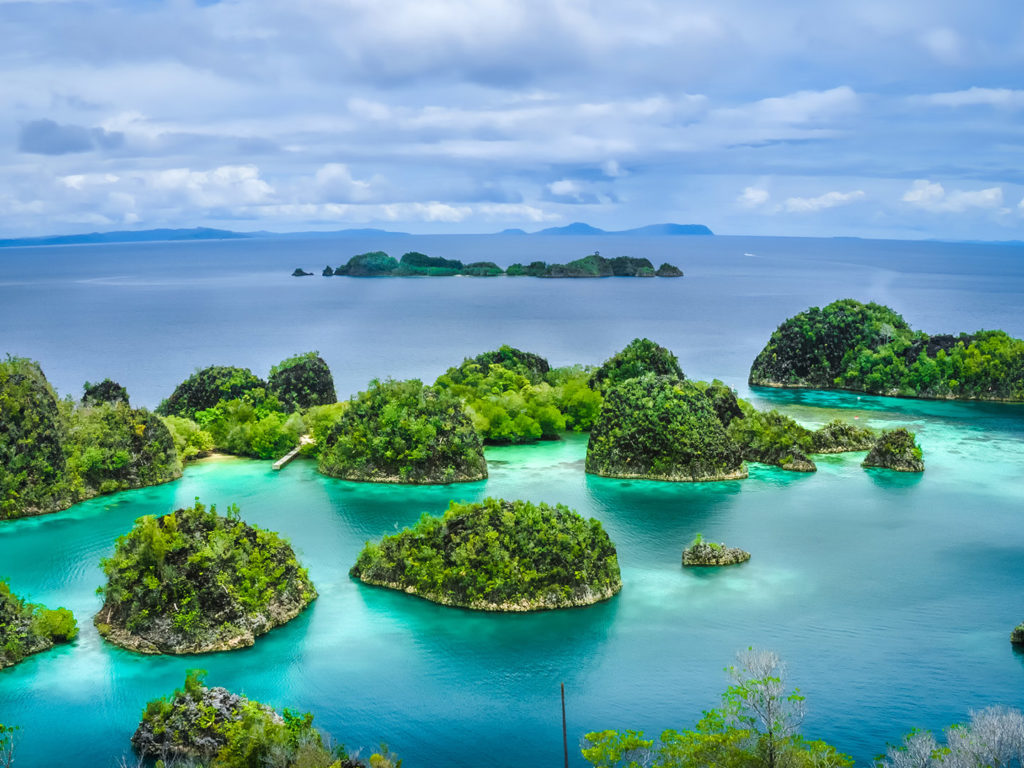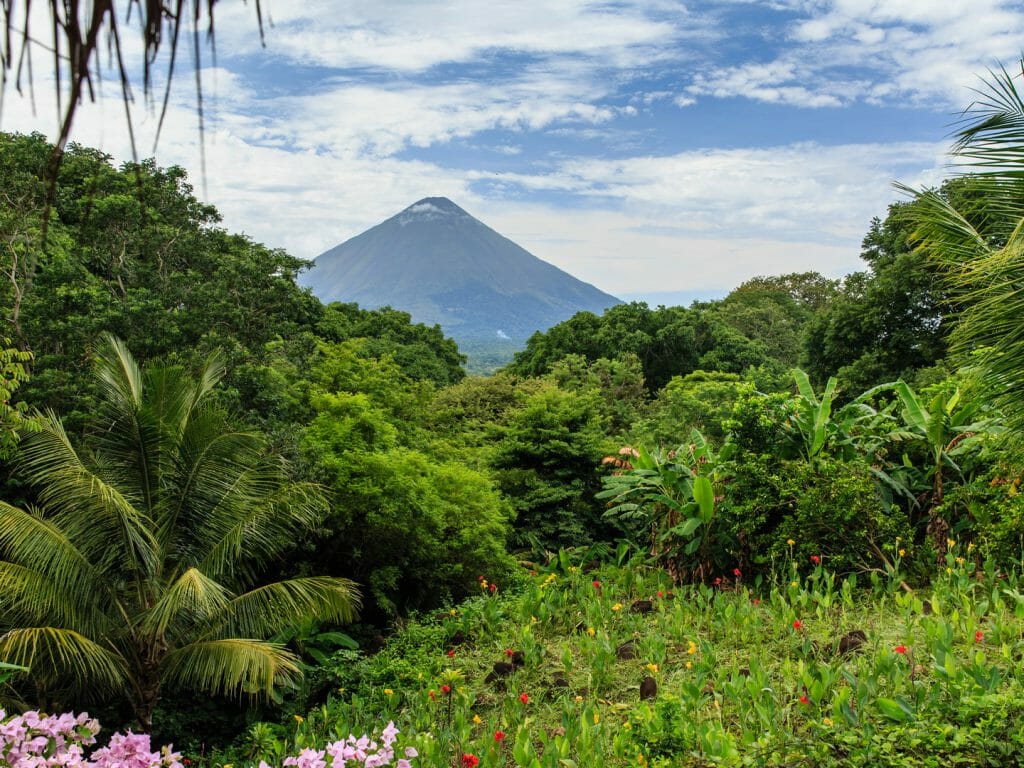There are 27 volcanoes in Nicaragua eight of which are active, thus, the others according to Oscar are “having a siesta”.
Two of the active volcanoes – Telica and Momotombo – provide 15% of the country’s electricity from their geothermal activity.
The three most visited volcanoes – Masaya, Mombacho and Cerro Negro respectively – are all active. That latter is a backpacker haven of adrenaline-fuelled activities such as volcano-boarding – surfing down several hundred metres of black volcanic sand. I settled for the more sedate Masaya and Mombacho.
At Mombacho, I took the 40 minute crater walk through the cloud forest, a profusion of ferns, epiphytes and plants such as ginger. Orange Monarch butterflies dance in the sunlight. I scan the branches of a copal tree in the hope of seeing a sloth feeding on its favourite leaves but instead see howler monkeys taking a siesta face down on a branch legs and arms akimbo. Apart from the occasional sulphurous whiff, Mombacho is also quiet for now.
Not so with Masaya. It is a national park composed of a nested set of craters and calderas filled with the white bloom of frangipani (the national flower, other than plastic…) which contrasts with the black volcanic rock – the acidity of the rain due to the volcano means there are some areas that have no vegetation. As we drive closer to the top of the volcano and its billowing gases, trees give way to just grass. There are few life forms that can withstand the sulphurous fumes other than the squawking green parakeets whom the Spanish chroniclers deemed worthy of note.
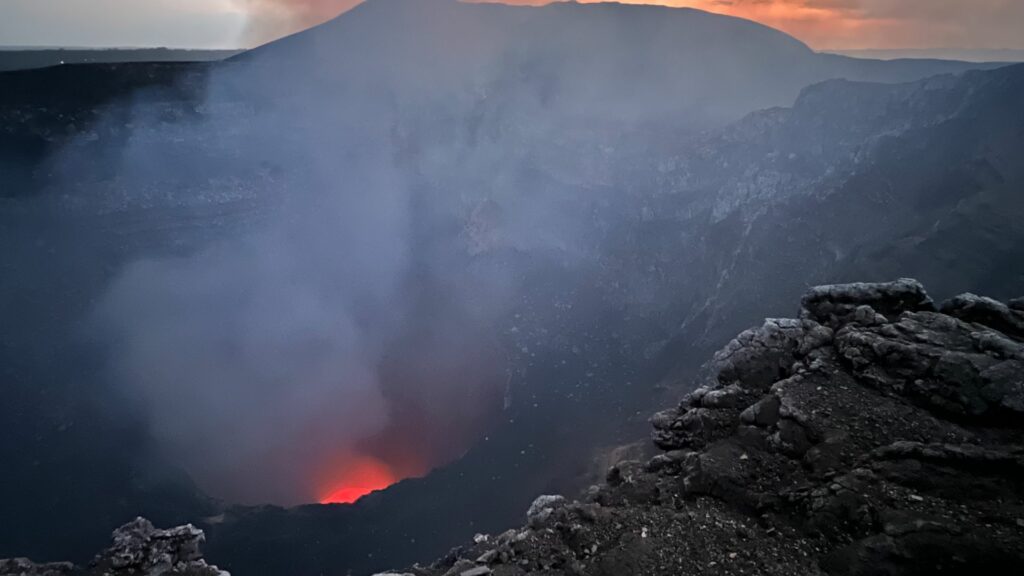
I sit and watch the orange-red sunset fade behind the volcano. As the light fades, the red-orange lava 200 metres below begins to glow in the dark. Boiling, spitting and churning, luminescent waves of molten rock crashed below the gently billowing steam – Masaya is one of a handful of volcanoes in the world where you can see such an active lava lake.
A nightjar swoops past. The acrid smell of chlorine stings the back of my nostrils. It is time to move on.
Concepion on the Island of Ometepe is another of Nicaragua’s active volcanoes. At the low-key port of San Jorge, I board a time-worn ferry with a cohort of backpackers and two large trucks, one full of vegetables to supply the island, the other empty in readiness to pick up a cargo of plantain, the staple of Ometepe.
The ferry rolls as we cross the choppy waters of Lake Nicaragua, at 8,000 square kilometres the largest lake in Central America and the 19th largest in the world. The Pacific Ocean is a mere 20 kilometres away, hence the presence of bull sharks in the lake and that 100 years ago, Nicaragua was being contemplated as an alternative to the Panama Canal. Something that is now back on the table as the Chinese and Russians seek to destabilise the US’s back door.
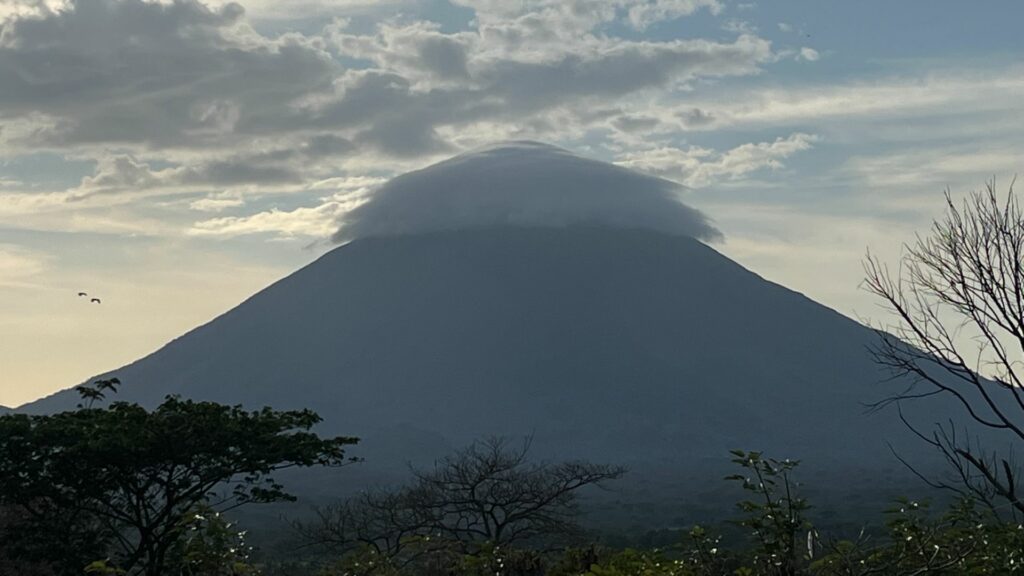
The majestic peaks of the Concepion and Maderas volcanoes (1,610 and 1,395 metres respectively) rise out of the horizon and create a spectacular approach to an island that time forgot. I arrive at Ometepe, literally meaning two volcanoes, which might explain the various yellow signs of ‘Ruta de Evacucion’ advising which way to head in the case of a volcanic eruption, one inadvertently pointing in the direction of a church.
An island of 260 square kilometres, Ometepe is the biggest island in a freshwater lake in the world. The island has deep historical roots as displayed in the small but magical El Ceibo Museum, which houses a curious and compelling display of pottery from squat statues that look Asian, others African to delicately painted representations of women showing their fundamental role in pre-Columbian society.
Today the island supports a laidback population of 42,000 who are mainly involved in agriculture – plantain, coffee and cattle ranching. Cowboys and farmers can be seen on horseback, the occasional ox and cart but increasingly motorbikes. At times, it felt as if Ometepe was becoming the home of BSM, the Backpacker School of Motoring, as backpackers nervously try their hand at the thrill of riding a motorbike for the first time.
This could be one reason why Managuans, on the whole, tend to shun Ometepe. The more likely reason is that the tranquil charm of the island and its unobtrusive way of life is too quiet for them.
The earthquake of 1972 killed 10,00 and destroyed much of old Managua. The past was erased leaving space for a modern city that explodes with advertising boards, malls and 24 hour casinos. Starbucks opened some 10 years ago – an insult to a nation that prides itself on its coffee. Pizza is more popular than tortillas. Baseball is the most popular sport.
Around 60% of its one million plus population is under 30. The young are marrying later due to the decline of the Catholic Church – down from 90% some 30 years ago to just 30% today – or possibly the introduction of Hooters.


